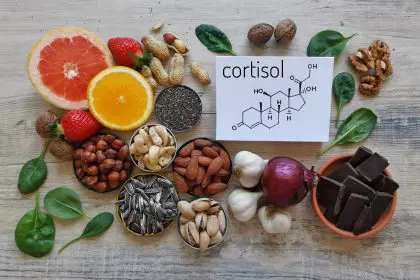Millions of people experience the frustrating cycle of back pain relief followed by inevitable return of symptoms. Despite countless treatments, medications, and therapies, the pain persists in coming back, often stronger than before. This recurring pattern suggests that most approaches address symptoms rather than the underlying cause.
The traditional medical model focuses heavily on structural problems like herniated discs, muscle strains, or spinal alignment issues. While these conditions certainly contribute to pain, they often represent the end result of deeper systemic problems rather than the root cause itself.
Understanding why back pain returns requires looking beyond the obvious physical symptoms to examine the complex interplay of factors that create and maintain chronic pain patterns. The human body operates as an interconnected system where problems in one area inevitably affect other regions.
Most people seek immediate relief when back pain strikes, leading them to pursue treatments that provide temporary comfort. However, this approach often creates a dependency cycle where the underlying issues remain unaddressed while symptoms are repeatedly managed rather than resolved.
The movement compensation trap
Your body possesses remarkable adaptability, constantly adjusting movement patterns to avoid pain or work around dysfunction. When one area becomes compromised, surrounding muscles and joints automatically compensate to maintain function. While this adaptation serves as a protective mechanism, it often creates new problems that perpetuate the pain cycle.
These compensation patterns develop gradually and become deeply ingrained in your nervous system. What begins as a temporary adjustment to protect an injured area eventually becomes your new normal movement pattern. The original injury may heal completely, but the compensatory movements remain, creating stress and tension in previously healthy tissues.
The lower back frequently becomes the victim of compensation patterns originating elsewhere in the body. Hip restrictions, ankle stiffness, or shoulder dysfunction can all force the lumbar spine to work harder and move in ways it was never designed to handle. Over time, this excessive demand leads to tissue breakdown and pain.
Breaking free from compensation patterns requires identifying and addressing the original source of dysfunction rather than focusing solely on where pain appears. This process often reveals that the painful area is actually the victim rather than the perpetrator of the problem.
Many people find temporary relief through treatments focused on their back, only to experience return of symptoms because the true source of compensation remains unchanged. Lasting resolution requires a comprehensive approach that addresses the entire kinetic chain rather than isolated problem areas.
The stress and tension connection
Physical pain and emotional stress exist in a bidirectional relationship where each influences and amplifies the other. Chronic stress creates muscle tension patterns that directly contribute to back pain development and maintenance. Meanwhile, persistent pain generates additional stress that perpetuates the cycle.
When your nervous system operates in a heightened state of alert due to stress, anxiety, or unresolved emotional issues, it maintains muscle tension throughout the body. The back muscles, particularly those along the spine, become chronically contracted as part of this protective response.
This tension pattern affects not only the muscles themselves but also the fascia, the connective tissue network that surrounds and connects all structures in your body. Fascial restrictions can create pulling forces that affect posture, movement quality, and pain perception in areas far from the original source of tension.
The modern lifestyle contributes significantly to stress-related back pain through constant mental stimulation, poor sleep quality, inadequate recovery time, and emotional pressures. These factors keep your nervous system in a reactive state that prevents proper healing and recovery.
Addressing the stress component of back pain requires more than just relaxation techniques. It involves understanding how your unique stress patterns manifest physically and developing strategies to interrupt these automatic responses before they create or worsen pain symptoms.
Postural adaptation syndrome
Your posture represents the accumulation of all your daily movement habits, work positions, and lifestyle choices. Over time, these patterns literally reshape your body structure, creating imbalances that predispose you to recurring back pain episodes.
Forward head posture, rounded shoulders, and excessive spinal curvature have become epidemic in our technology-driven society. These postural changes alter the normal loading patterns on your spine, forcing certain muscles to work overtime while others become weak and inhibited.
The human spine evolved to function optimally in an upright, balanced position. When this alignment becomes compromised, the intricate system of muscles, ligaments, and joints that support your back must work much harder to maintain stability and function.
Postural adaptations happen so gradually that most people remain unaware of the changes until pain develops. By the time symptoms appear, the structural changes may be significant enough to require substantial time and effort to reverse.
Simply improving posture awareness isn’t sufficient to create lasting change. The nervous system must be retrained to recognize and maintain proper alignment automatically. This process requires consistent practice and patience as your body learns to function in new patterns.
The inflammation feedback loop
Chronic inflammation creates a self-perpetuating cycle that maintains back pain long after the original injury has healed. This inflammatory response can be triggered by various factors including poor diet, inadequate sleep, chronic stress, and environmental toxins.
When inflammation becomes chronic, it interferes with normal tissue healing and repair processes. Instead of resolving completely, damaged tissues remain in a state of low-level irritation that makes them vulnerable to re-injury with minimal provocation.
The inflammatory process also affects pain perception by sensitizing nerve endings and altering pain processing in the spinal cord and brain. This sensitization can cause normal activities to trigger pain responses that would typically be painless in a healthy system.
Diet plays a crucial role in either promoting or reducing inflammation throughout the body. Foods high in processed sugars, trans fats, and artificial additives can fuel inflammatory processes, while nutrient-dense whole foods provide the building blocks necessary for tissue repair and recovery.
Sleep quality directly impacts your body’s ability to manage inflammation and heal damaged tissues. During deep sleep phases, your body releases growth hormone and activates repair processes that are essential for recovery from daily tissue stress and micro-trauma.
The fear avoidance trap
Pain creates natural protective responses designed to prevent further injury. However, when these protective behaviors become excessive or persist beyond the healing period, they can actually perpetuate and worsen the original problem.
Fear of movement or re-injury often leads people to significantly reduce their activity levels and avoid movements that might trigger pain. While this approach may provide short-term comfort, it ultimately leads to muscle weakness, joint stiffness, and decreased overall function.
The nervous system interprets reduced movement and activity as confirmation that danger still exists. This interpretation maintains the pain response and hypersensitivity even when tissues have healed adequately to resume normal function.
Breaking the fear avoidance cycle requires gradually reintroducing movement and activity in a controlled, progressive manner. This process helps retrain the nervous system to recognize that movement is safe and beneficial rather than dangerous.
Building confidence in your body’s ability to handle normal activities is essential for long-term recovery. This confidence develops through successful experiences with gradually increasing activity levels rather than through intellectual understanding alone.
The missing piece most people ignore
The most overlooked factor in recurring back pain is the relationship between your breathing patterns and spinal stability. Poor breathing mechanics directly affect the deep stabilizing muscles of your core, compromising spinal support and creating vulnerability to injury.
Chronic stress, poor posture, and sedentary lifestyle habits all contribute to dysfunctional breathing patterns. When you breathe primarily with your chest and shoulders rather than your diaphragm, you miss out on the natural stabilizing effect that proper breathing provides to your spine.
The diaphragm functions as both a breathing muscle and a core stabilizer. When it works properly, it coordinates with other deep muscles to create internal pressure that supports your spine during movement and loading. Dysfunction in this system leaves your back vulnerable to injury.
Most people remain completely unaware of their breathing patterns and the impact these patterns have on their physical health. Retraining proper breathing mechanics can provide immediate improvements in back pain and create a foundation for long-term spinal health.
Creating lasting change
Overcoming recurring back pain requires addressing all contributing factors rather than focusing on isolated symptoms. This comprehensive approach takes time and patience but offers the potential for genuine resolution rather than temporary management.
The most effective strategies combine movement retraining, stress management, postural correction, inflammation reduction, and breathing optimization. Each component supports and enhances the others, creating synergistic effects that promote healing and prevent recurrence.
Success depends on consistency and gradual progression rather than quick fixes or dramatic interventions. Small, sustainable changes implemented consistently over time create lasting transformation in how your body functions and feels.
Working with qualified professionals who understand the complexity of chronic pain can accelerate your progress and help you avoid common pitfalls. However, your own commitment to understanding and addressing the root causes remains the most critical factor in achieving lasting relief.














